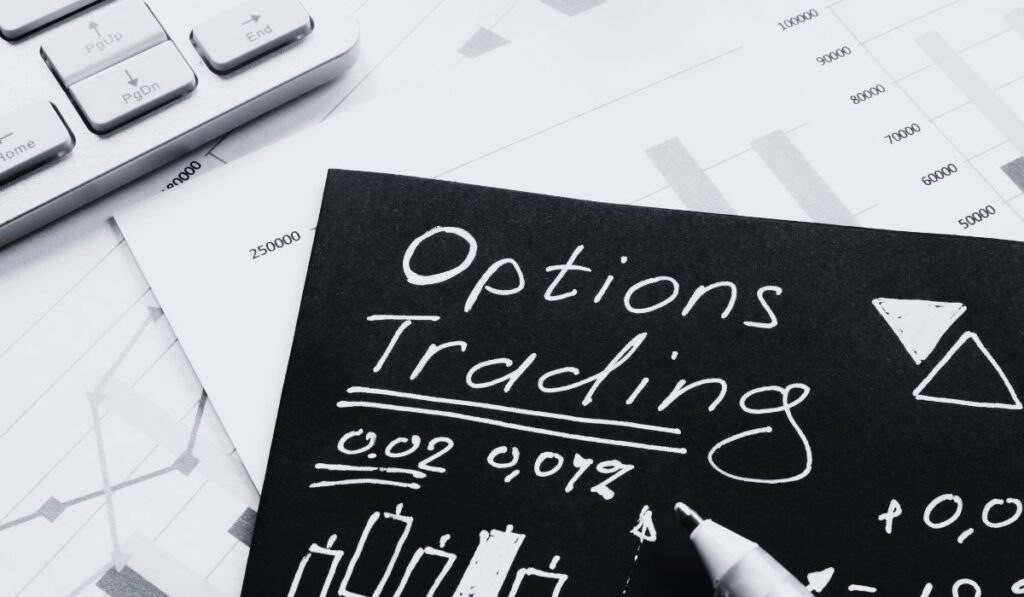What is Forex Trading?

Understanding forex trading basics—Forex trading, also known as foreign exchange trading, is the simultaneous buying and selling of one currency. It’s the world’s largest and most liquid financial market, where individuals, businesses, and institutions exchange currencies to facilitate international trade and investment.
Key Players in the Forex Market
The Forex market is a global marketplace, and several key players contribute to its activity:
- Central Banks: They manage their country’s currency supply and intervene in the market to influence exchange rates. For example, the US Federal Reserve (Fed) can buy or sell US dollars to stabilize the dollar’s value.
- Commercial Banks: These banks facilitate currency exchange for their clients, businesses, and individuals, and they also participate in the market for profit.
- Hedge Funds and Investment Firms: These institutions invest in various assets, including currencies, and use Forex trading strategies to manage risk and generate returns.
- Retail Traders: Individuals like you and me can participate in the Forex market through online brokers, hoping to profit from currency fluctuations.
Currency Pairs Traded in Forex
Forex trading involves the exchange of currency pairs. The most common pairs are:
- EUR/USD (Euro/US Dollar): The most traded currency pair, representing the value of the Euro against the US dollar.
- USD/JPY (US Dollar/Japanese Yen): A popular pair reflecting the US dollar’s value against the Japanese Yen.
- GBP/USD (British Pound/US Dollar): A significant pair representing the British Pound’s value against the US dollar.
- USD/CHF (US Dollar/Swiss Franc): A pair often used as a safe haven currency due to Switzerland’s economic stability.
Understanding Forex Market Dynamics
![]()
The Forex market is a dynamic and constantly evolving environment. Understanding the factors that influence currency exchange rates is crucial for successful trading. A complex interplay of economic, political, and social forces determines the value of one currency relative to another.
Economic Indicators and Currency Fluctuations
Economic indicators provide valuable insights into the health of a country’s economy and can significantly impact currency exchange rates. These indicators can be broadly categorized into leading, lagging, and coincident indicators.
Understanding the basics of forex trading, such as currency pairs and market movements, is essential. Once you’ve got that down, you can start exploring different strategies to navigate the market, like those outlined in this helpful guide on Forex trading strategies for beginners.
Building a solid foundation in the basics will give you the confidence to experiment with strategies and eventually develop your own unique approach to trading.
- Leading indicators anticipate future economic activity. For example, the Purchasing Managers’ Index (PMI) measures business sentiment and can predict future economic growth. A rise in the PMI suggests optimism among businesses, potentially leading to increased investment and economic expansion, which can strengthen the corresponding currency.
- Lagging indicators reflect past economic performance. For instance, unemployment rates provide information about the labor market’s health. A decline in unemployment rates indicates a robust economy, potentially boosting the value of the associated currency.
- Coincident indicators provide a snapshot of the current economic situation. Examples include GDP growth and retail sales. Strong GDP growth and rising retail sales indicate a healthy economy, which can support the currency’s value.
Global Events and Forex Market Impact
Global events, such as political instability, natural disasters, and international conflicts, can significantly influence currency exchange rates.
- Political instability can create uncertainty and risk aversion among investors, leading to a decline in the value of the affected country’s currency. For example, during the 2011 Egyptian revolution, the Egyptian pound depreciated significantly against the US dollar.
- Natural disasters can disrupt economic activity and lead to currency depreciation. For example, the 2011 Japanese earthquake and tsunami caused significant damage to the Japanese economy, resulting in a decline in the value of the Japanese yen.
- International conflicts can create geopolitical uncertainty and impact currency exchange rates. For example, the 2014 Russian annexation of Crimea led to sanctions against Russia, resulting in a decline in the value of the Russian ruble.
Forex Trading Terminology

Understanding key terminology is crucial for effectively navigating the forex market. This section delves into essential terms that will help you comprehend the nuances of forex trading.
Pips
A pip, or “point in percentage,” is the smallest unit of price movement in a currency pair. It’s the fourth decimal place for most currency pairs, except for Japanese yen pairs, where it’s the second decimal place. For instance, a pip for EUR/USD would be 0.0001, while for USD/JPY it would be 0.01.
Lots
Lots represent the volume of currency traded in a forex transaction. They are standardized units that determine the amount of currency you are buying or selling. The most common lot sizes are:
- Standard Lot:100,000 units of the base currency.
- Mini Lot:10,000 units of the base currency.
- Micro Lot:1,000 units of the base currency.
Leverage
Leverage is a powerful tool in forex trading that allows you to control a larger position with a smaller initial investment. It essentially amplifies your potential profits or losses. For example, if you have a leverage of 1:100, a $1,000 deposit gives you control of $100,000 in trading capital.
Leverage is a double-edged sword. While it can amplify profits, it can also magnify losses.
Understanding forex trading basics is like learning the rules of a game before you play. You need to know what currency pairs are, how they move, and what factors influence their prices. Once you have a solid grasp of the fundamentals, you can start thinking about how to make money.
Check out this article on How to make money with forex trading for some practical tips and strategies. Remember, even after learning the basics, forex trading is a complex and volatile market, so it’s important to be patient and disciplined.
Margin
Margin is the money you must deposit to open and maintain a position in your trading account. It is a security deposit and is calculated as a percentage of the total trade value. The margin requirement depends on the leverage your broker provides and the specific currency pair being traded.
Bid and Ask Prices
In the forex market, you’ll encounter two prices for every currency pair: the bid and the ask prices. The bid price is the price at which a market maker is willing to buy a currency, while the ask price is the price at which they are willing to sell it.
The difference between the bid and ask prices is known as the spread, representing the broker’s profit margin.
Types of Forex Orders
Various types of forex orders allow you to execute trades based on your trading strategy and risk tolerance. Common order types include:
- Market Order: An immediate order to buy or sell at the current market price.
- Limit Order: An order to buy or sell at a specific price or better. This allows you to set a price target and avoid paying more than you are willing to.
- Stop Order: An order to buy or sell once the market reaches a specific price level. This helps to limit potential losses or protect profits.
- Stop-Limit Order: A combination of a stop order and a limit order. This allows you to set both a stop and limit prices, providing greater control over your trade execution.
Forex Trading Strategies

Forex trading strategies are traders’ methods and approaches to make informed decisions about buying or selling currencies. These strategies are essential for navigating the complex and dynamic forex market.
Technical Analysis
Technical analysis involves studying past price and volume data to identify patterns and trends that can predict future price movements. This approach assumes that historical price data reflects all relevant information about a currency pair and that price movements are cyclical and predictable.
- Trend Analysis: Traders use trend lines, moving averages, and other indicators to identify the current trend’s direction and potential support and resistance levels.
- Chart Patterns: Recognizable chart patterns, such as head and shoulders, double tops, and triangles, can signal potential reversals or continuations of trends.
- Technical Indicators: These are mathematical calculations based on price and volume data that provide insights into market sentiment, momentum, and overbought/oversold conditions. Common technical indicators include:
- Moving Averages (MA): Averages of past prices that smooth out price fluctuations and highlight trends.
- Relative Strength Index (RSI): Measures the magnitude of recent price changes to evaluate overbought or oversold conditions.
- Stochastic Oscillator: Compares a currency pair’s closing price to its price range over a given period to identify overbought or oversold conditions.
- MACD (Moving Average Convergence Divergence): Identifies trend changes and potential reversals by comparing two moving averages.
Fundamental Analysis
Fundamental analysis focuses on macroeconomic factors and events that can influence currency values. It examines economic data, political events, and central bank policies to identify potential shifts in currency supply and demand.
- Economic Data Releases: Key economic indicators, such as GDP growth, inflation, unemployment rates, and interest rate decisions, can significantly impact currency values.
- Political Events: Political instability, elections, and changes in government policies can affect investor confidence and currency valuations.
- Central Bank Policies: Monetary policies, including interest rate changes and quantitative easing, can influence currency values by affecting borrowing costs and inflation expectations.
Managing Forex Trading Risk: Understanding Forex Trading Basics

Understanding and managing risk is paramount in the world of forex trading, where profits and losses can fluctuate rapidly. Risk management is the foundation of responsible trading, ensuring you protect your capital and stay in the game for the long haul.
Stop-Loss Orders
Stop-loss orders are your safety net in the forex market. They automatically close your position when the price reaches a predetermined level, limiting your potential losses. Think of it as setting a safety valve on your trading strategy.
A stop-loss order is a crucial tool for protecting your capital, preventing excessive losses, and ensuring you stay in the game for the long haul.
For example, if you buy EUR/USD at 1.1000, you might set a stop-loss order at 1.0950. If the price drops below 1.0950, your order will automatically close, limiting your loss to 50 pips.
Position Sizing
Position sizing determines how much capital you allocate to each trade. It’s about balancing your risk appetite with your overall trading goals. A good rule of thumb is to risk no more than 1-2% of your trading capital on any single trade.
Position sizing is about finding the sweet spot between maximizing potential profits and minimizing risk.
For example, if you have a $10,000 trading account and risk 1%, your maximum loss per trade would be $100. This ensures that even if you experience a losing trade, it won’t significantly impact your overall capital.
Setting Realistic Profit Targets
Profit targets are the goals you set for each trade. They help you decide when to exit a trade and lock in profits. Realistic profit targets are based on market analysis, risk tolerance, and potential profit potential.
Profit targets should be based on a thorough understanding of the market, your risk tolerance, and the potential for profit.
For example, if you’re trading a trending market, you might set a profit target of 2-3 times your initial risk. If the market is more volatile, you might set a smaller profit target to avoid potential losses.
Managing Losses, understanding Forex trading basics
Losses are an inevitable part of trading. The key is to manage them effectively. This includes accepting losses as a part of the process, sticking to your stop-loss orders, and avoiding emotional trading decisions.
Effective loss management involves accepting losses as a part of the process, sticking to your stop-loss orders, and avoiding emotional trading decisions.
For example, if you experience a losing trade, don’t chase your losses by increasing your position size or holding onto the trade longer than planned. Instead, accept the loss, learn from it, and move on to the next trading opportunity.
Forex Trading Platforms and Tools
Forex trading platforms are software applications that allow traders to access the foreign exchange market and execute trades. These platforms provide many features and tools to facilitate trading and enhance the overall trading experience.
Popular Forex Trading Platforms
Popular Forex trading platforms offer a variety of features that cater to different trading styles and needs. Some of the key features commonly found in these platforms include:
- Real-time market data: This allows traders to monitor live price fluctuations and make informed trading decisions based on the latest market movements.
- Charting tools: Platforms offer various charting tools that enable traders to visualize price patterns, identify trends, and analyze market behavior. These tools include line charts, candlestick charts, and bar charts.
- Technical indicators: These mathematical formulas analyze historical price data and provide insights into future price movements. Common technical indicators include moving averages, MACD, and RSI.
- Order types: Different orders allow traders to execute trades based on specific price levels or market conditions. These include market orders, limit orders, stop orders, and trailing stops.
- Trading signals: Some platforms offer automated signals alerting traders to potential trading opportunities based on pre-defined criteria.
- News and analysis: Many platforms provide access to financial news and market analysis to help traders stay informed about global events and their potential impact on currency prices.
- Mobile trading: The ability to trade from mobile devices allows traders to access the market from anywhere at any time.
Trading Indicators
Trading indicators are mathematical formulas that analyze historical price data and provide insights into potential future price movements. They help traders identify trends, potential support and resistance levels, and overbought or oversold conditions. Some commonly used trading indicators include:
- Moving averages: These indicators smooth out price fluctuations and help identify trends. They are calculated by averaging the closing prices over a specific period. For example, a 50-day moving average would average the closing prices over the past 50 days.
- Relative Strength Index (RSI): This indicator measures the magnitude of recent price changes to evaluate overbought or oversold conditions. It ranges from 0 to 100, with readings above 70 considered overbought and below 30 considered oversold.
- Moving Average Convergence Divergence (MACD): This indicator helps identify trends and potential buy or sell signals. It compares two moving averages to generate a signal line that crosses above or below a moving average line.
Charting Tools
Charting tools are essential for visualizing price patterns, identifying trends, and analyzing market behavior. These tools help traders better understand market dynamics and make informed trading decisions. Some commonly used charting tools include:
- Line charts: These charts connect closing prices over a specific period, providing a simple representation of price movements.
- Candlestick charts: These charts display price movements over a specific period using candlestick shapes representing open, high, low, and close prices. They provide more detailed information about price action than line charts.
- Bar charts: These charts use vertical bars to represent price movements over a specific period. The height of the bar represents the price range, and the left and right sides represent the open and close prices.
- Fibonacci retracement: This tool uses Fibonacci numbers to identify potential support and resistance levels based on historical price movements.
- Trendlines: These lines are drawn on charts to identify trends and potential support or resistance levels.
Educational Resources
Numerous educational resources are available for Forex traders, ranging from online courses and books to webinars and trading communities. These resources can help traders develop their trading skills, understand market dynamics, and learn effective trading strategies. Some examples of educational resources include:
- Online courses: Many online platforms offer Forex trading courses that cover topics such as fundamental and technical analysis, trading strategies, risk management, and platform usage.
- Books: Numerous books on Forex trading are available that provide comprehensive insights into the market, trading strategies, and risk management techniques.
- Webinars: Forex brokers and educational institutions often host webinars that cover various topics related to Forex trading, providing valuable insights and practical tips.
- Trading communities: Online forums and social media groups dedicated to Forex trading allow traders to connect, share ideas, and learn from each other’s experiences.
Common Queries
What is the minimum amount I need to start forex trading?
The minimum amount you need to start forex trading varies depending on the broker you choose and the trading platform you use. Some brokers offer micro-lots, allowing you to trade with as little as $10. However, it’s generally recommended to start with a larger amount, around $500 to $1000, to have enough capital to manage your trades effectively and cover potential losses.
Is forex trading safe?
Forex trading, like any form of investment, carries risks. The market is highly volatile, and you can lose your investment if you don’t manage your risks properly. It’s essential to learn about risk management techniques and to only trade with money you can afford to lose.
How do I choose a forex broker?
When choosing a forex broker, consider their reputation, regulatory compliance, trading platform features, trading costs, customer support, and educational resources. Research different brokers and compare their offerings before making a decision.
What are the best forex trading platforms?
Popular forex trading platforms include MetaTrader 4 (MT4), MetaTrader 5 (MT5), cTrader, and TradingView. These platforms offer various features such as charting tools, technical indicators, order types, and access to real-time market data.
How can I learn more about forex trading?
Many resources are available to learn about forex trading, including online courses, books, articles, webinars, and demo accounts. You can also connect with experienced traders through online forums and communities.

![Funded Picker Review (2025) + 15% Discount Code [PFR15] 1 funded picker](https://propfirmreviews.net/wp-content/uploads/2025/08/funded-picker-1024x576.jpg)



